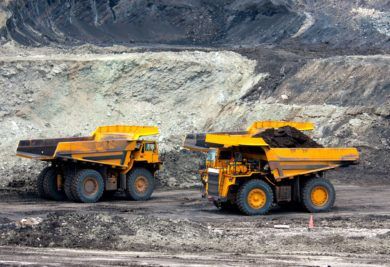Increasing the depths of existing mines allow miners to extract more valuable materials without the hassles of opening a new mine. As such, due to favorable conditions, including strong commodity prices for precious metals and the risk of inflation (which positively influences the previous metal market), there has been increasing interest in the development of ultra-deep mines.
Currently, eight of the ten deepest mines are located in South Africa due to its abundance of precious metal resources (the remaining two mines located in Canada, near Ontario). Let’s take a look at some of the deepest mines in the world as well as a few mines that are substantial for different reasons.
Top 5 Deepest Mines
Mponeng Gold Mine
The Mponeng (‘look at me’ in Sotho) Gold Mine, which has been in commission since 1986, is located southwest of Johannesburg, South Africa. Mponeng currently holds records as the world’s deepest gold mine and the world’s deepest mine, with depths reaching over 4.0 km below the surface. Because temperatures can reach up to 150°F in the mine at such depths, an ice slurry must be pumped into Mponeng to maintain temperatures that can be withstood by humans.
Over 5,400 tonnes of rock are mined from Mponeng daily, although gold output has steadily decreased over the last decade (which increases interest in digging even deeper).
TauTona Gold Mine
The TauTona (‘great lion’ in Setswana) Gold Mine, located in the West Wits area of South Africa, is the second deepest pit in the world. TauTona’s operational depth reaches up to 3.9 below the surface, and it has 800 km of tunnels and three shafts.
Recently, there has been talk of closing down the TauTona Mine, which has been operational since 1962, because its resources have been mostly exhausted and digging deeper is dangerous for workers.
Savuka Gold Mine
The Savuka (‘wake up’ in Zulu) Gold Mine is the world’s third deepest mine, with mining depths up to 3.7 km. Like TauTona, Savuka is also located in the West Wits area of South Africa (and the two mines share a processing site).
Driefontein Gold Mine
The Driefontein Mine, located in the Gauteng Province of South Africa, is the fourth deepest mine in the world, with operating depths up to 3.4 km below the surface. Driefontein, which comprises two major ore bodies, is operated using eight shafts.
Currently, plans to extend the Driefontein mine are being reviewed that could extend the lifespan of the mine an estimated 13 years (to approximately 2035).
Kusasalethu Gold Mine
The Kusasalethu Gold Mine, located west of Johannesburg in South Africa, is the world’s fifth deepest mine, operating at depths up to 3.2 km below the surface, Kusasalethu was developed as a project to extend the former Elandsrand mine, which will add an estimated 18 years to the site’s operational life.
Largest Mining Operation
The Garzweiler surface mine, named after the nearby village of Garzweiler, is currently the largest surface mine in the world and covers an area of 48 sq. km. At Garzweiler, the top ground layer is removed for lignite extraction. Lignite, also called ‘brown coal,’ can be used for power generation.
Deepest Man-Made Open Pit
Bingham Canyon Mine, located near Salt Lake City, UT in the United States, is the world’s deepest man-made open pit excavation site. Bingham Canyon, which is the largest copper mine in the United States, is approximately 4.5 km in diameter and 1.2 km deep.
Although Bingham Canyon is primarily a copper mine, gold, silver, platinum, and palladium have also been mined from the site.
In need of new innovative mining equipment or looking to improve your mining process? At General Kinematics we have decades of experience in mining and resource recovery. Contact us today and let one of our expert engineers find you the best mining solutions and equipment for your operation.









